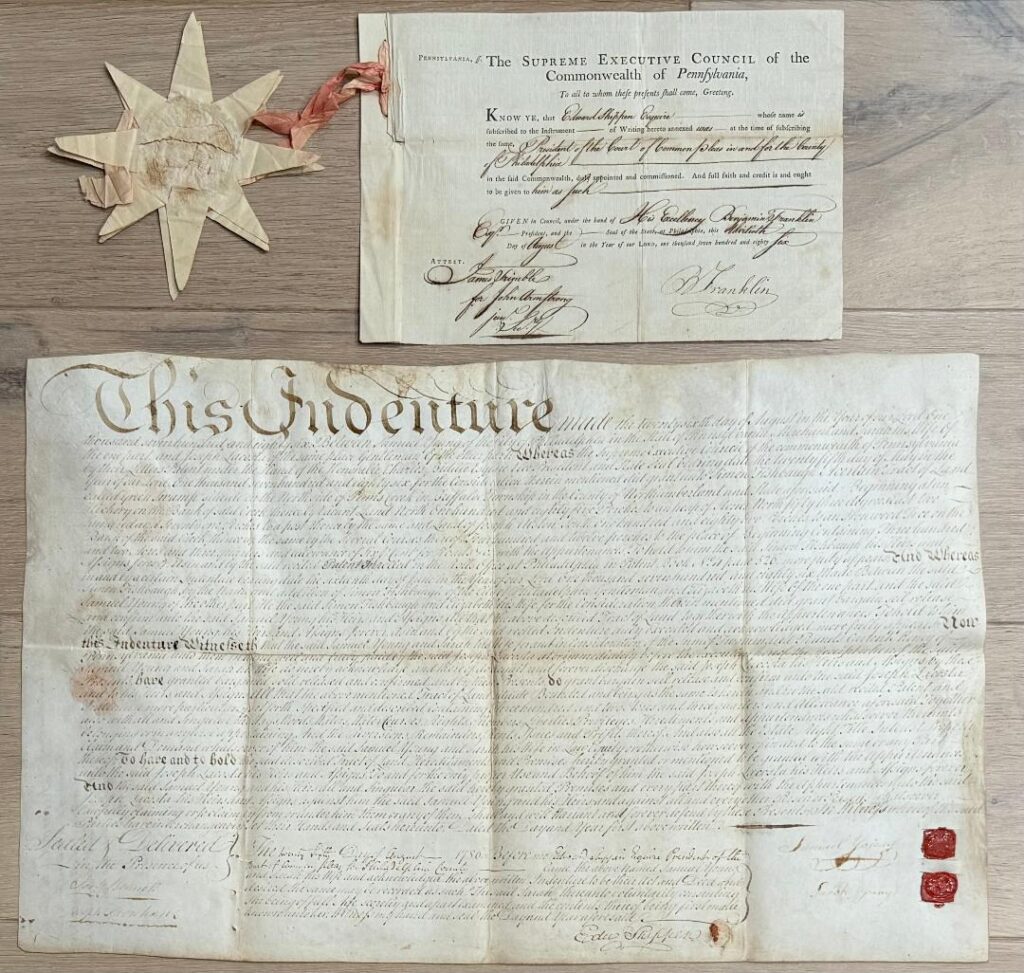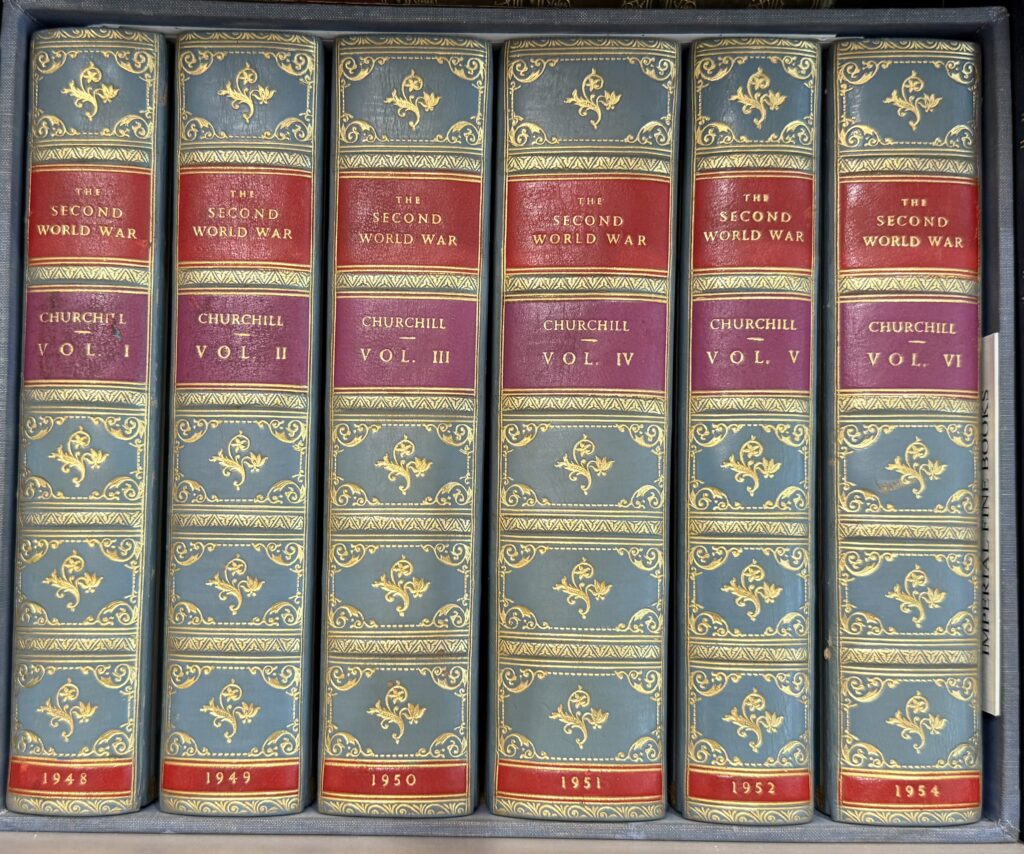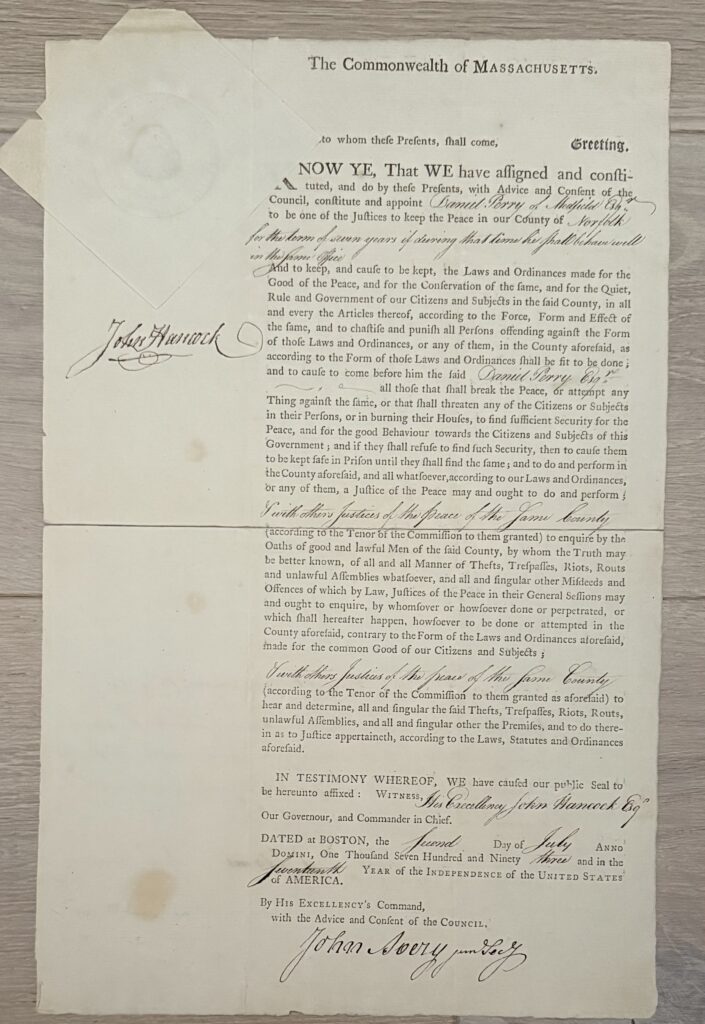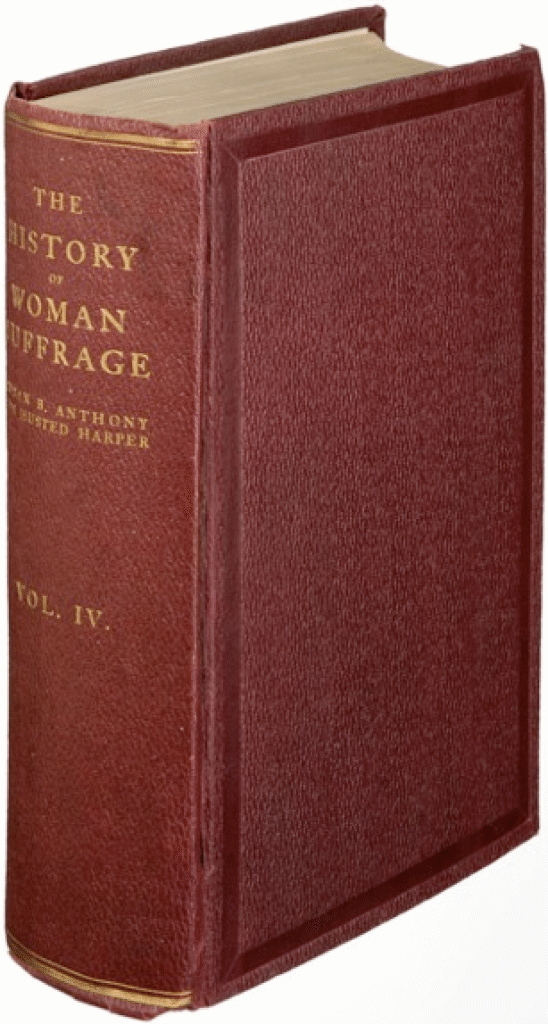BENJAMIN FRANKLIN CONFIRMS THE JUDGESHIP OF BENEDICT ARNOLD’S FATHER-IN-LAW
Benjamin Franklin, Philadelphia printer, statesman, and diplomat who signed both the Declaration of Independence and the Constitution, served near the end of his life as President of the Supreme Executive Counsel of Pennsylvania, a post that was the equivalent of Governor of the state. It was in that capacity that Franklin signed this highly unusual document which certifies that Edward Shippen , who signed the companion document, is President of the Court of Common Pleas for Philadelphia County.
While the companion document is a rather typical deed of the period, the Franklin signed document is unique. The companion document is written out on a large piece of vellum (14.5” high by 23” wide) in which Samuel Young and his wife Sarah, sell a parcel of 302 acres in Northumberland County .
Edward Shippen (1729- 1806) was a leading attorney in Philadelphia who held a variety of public offices, both before and after the Revolution, and who ultimately became Chief Justice of Pennsylvania. Shippen had four daughters, the youngest of whom was Margaret (Peggy) Shippen, born July 11, 1760.
Courtship and marriage to Benedict Arnold.
The British captured Philadelphia in September 1777, and the Shippen family held social gatherings at their home, in keeping with their political interests and stations. A frequent guest was John André, an officer in General William Howe’s command, and he paid particular attention to Peggy. The British withdrew from the city in June 1778 following France’s entry into the war; André left Philadelphia with his fellow troops, but he and Peggy remained in contact.
In late summer of 1778, Peggy Shippen met Benedict Arnold, the Continental military commander of Philadelphia, and he began courting her despite the differences between himself and Judge Shippen. Shortly after, Arnold sent her father a letter asking for her hand, but Shippen was skeptical of Arnold due to Arnold’s legal problems. In 1779, the Supreme Executive Council of Pennsylvania had brought eight formal charges against Arnold for corruption and malfeasance with the money of the federal and state governments, and he was subsequently convicted on two relatively minor counts. Despite this, Edward Shippen eventually granted permission for Arnold and Peggy to marry, which took place on April 8, 1779.
Espionage between the Arnolds and Major John André.
As a newlywed, Peggy may have had contact with her “dear friend” Major André, who had become General Clinton’s spy chief. She and Arnold also had close friends who were either actively Loyalist or sympathetic to that cause. Some historians believe that Peggy Shippen instigated the correspondence between Arnold and André and sent military secrets to the British before her wedding.
Arnold hired Joseph Stansbury to initiate communications in May 1779, offering his services to the British not long after he married. General Clinton gave Major André orders to pursue the possibility, and secret communications began between André and Arnold. The messages that they exchanged were sometimes transmitted through Peggy’s actions; letters written in her hand also include coded communications written by Benedict Arnold in invisible ink.
Enraged by his treatment in Philadelphia, General Arnold resigned his command there in March 1779. Pursuant to the secret communications with the British, he sought and obtained the command of West Point, a critical American defense post in the highlands of the Hudson River. Peggy and their infant son Edward Shippen Arnold (born 19 Mar 1780) joined him there in a home on the Hudson two miles south of West Point. General Arnold systematically weakened the defenses of West Point with the intent of making it easier for the British to capture.
On Thursday, September 21, 1780, General Arnold met with André on the shores of the Hudson River and gave him documents and maps about the fortifications at West Point in anticipation of the British capture of that site. On Saturday, September 23, André was arrested as he rode towards British territory, the documents were discovered, and the plot was exposed. After a military trial, Major André was condemned to death as a common spy and was hanged. Peggy Shippen has been described as “the highest-paid spy in the American Revolution”.
Our historic gem, accompanying the deed, is a partly printed document perfectly signed by Benjamin Franklin, which attests that Edward Shippen was, in fact, President of the Court of Common Pleas at the time he signed the deed. Franklin signed this document on 30 August 1786, as President of the Supreme Executive Counsel. His signature is at the lower right and is very large, dark and clear.
The reason for this certification by Franklin was that Shippen had been President of the Court of Common Pleas for two years, having been appointed to the post in 1784. However, Shippen had been without a post during the Revolution and his re-entry into public life in 1784 was not known in Northumberland County, where the deeded land was located. Franklin’s certification that, Shippen was “…duly appointed and commissioned…and full faith and credit should be given to him as such” would have settled any question as to Shippen’s authority.
Attached to the Franklin document in the left margin , by the original pink ribbon, is a fine large impression of the state seal in white paper over red wax. Originally the ribbon was used to attach the Franklin document to the deed. This is the only document of this type signed by Franklin we have encountered and a simply amazing association between Benjamin Franklin and Benedict Arnold.




